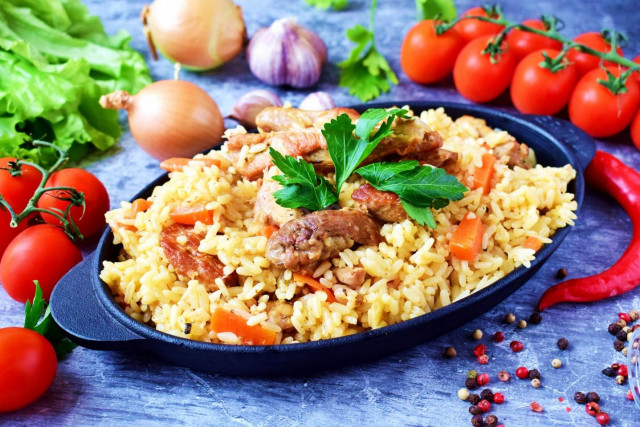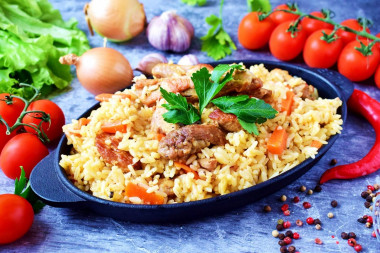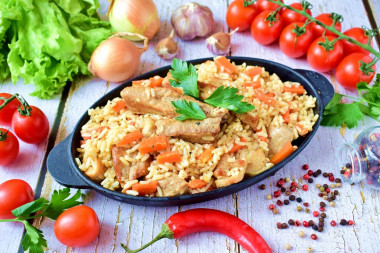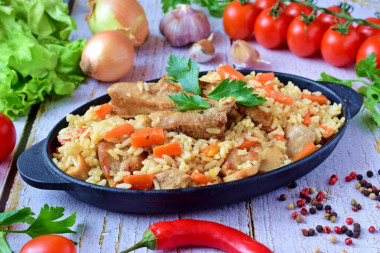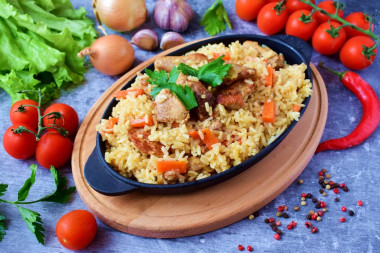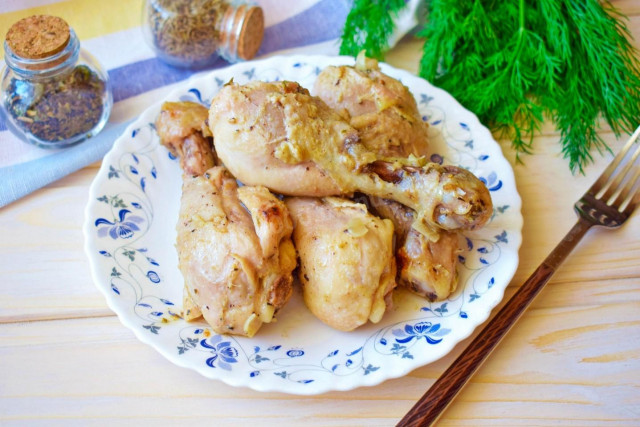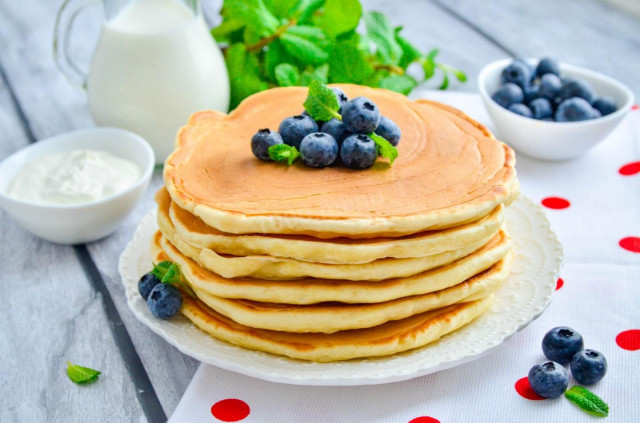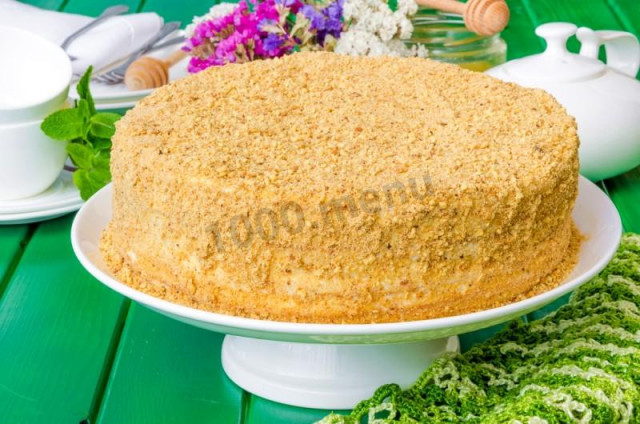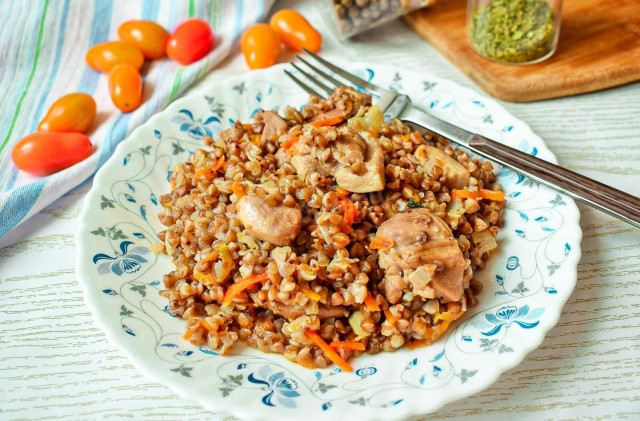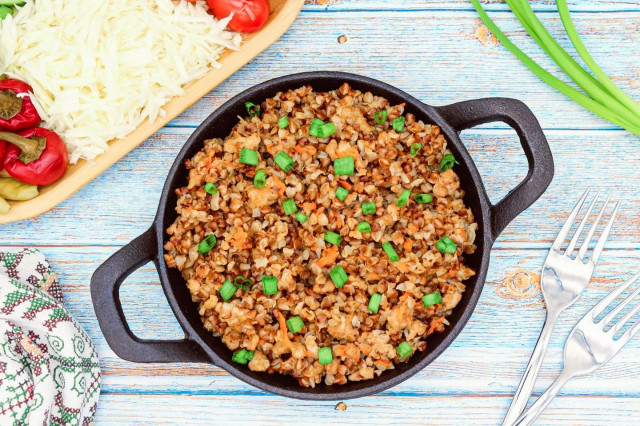Composition / ingredients
Step-by-step cooking
Step 1:
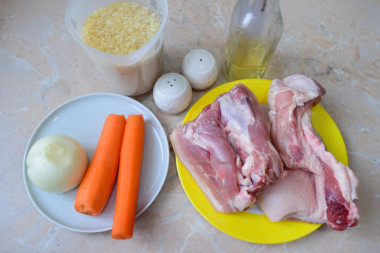
How to make pork pilaf in a frying pan? Prepare all the necessary ingredients for this. Peel the onions and carrots and rinse them in running water from dirt. I take pork with a small amount of fat. The fat does not allow the meat to dry out.
Step 2:
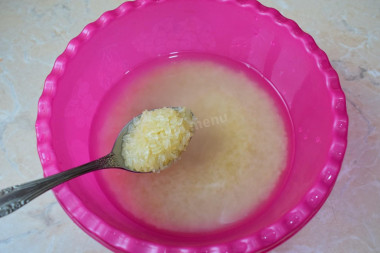
Take rice for pilaf not steamed, but ordinary. Rinse it several times in cold water. Then pour boiling water and leave to stand for 20-30 minutes.
Step 3:
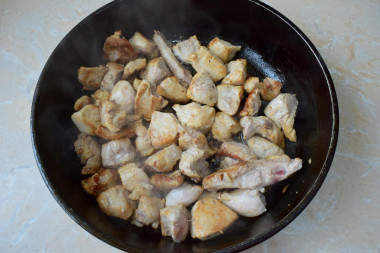
To prepare pilaf, take a large, deep frying pan with high sides. Preheat it to a hot state and pour vegetable oil. Cut the pork into pieces and fry it over high heat so that it is covered with a golden crust. Quickly fried meat retains all the juices inside the pieces.
Step 4:
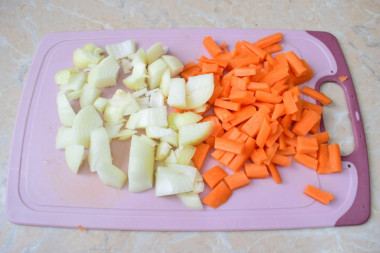
Cut the carrots into cubes, and cut the onion into large cubes.
Step 5:
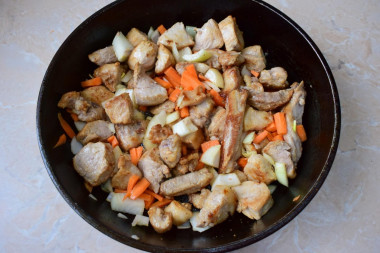
Put the onions and carrots in the pan with the meat. Stir and fry everything together for 2-3 minutes.
Step 6:
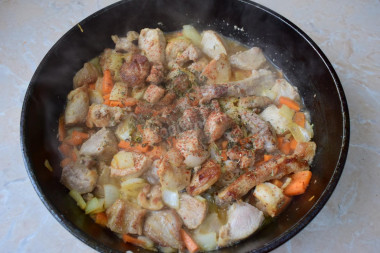
Then add salt and spices. You can take a ready-made set of spices for pilaf. Pour a small amount of hot water over the meat and cover with a lid. Simmer on low heat for 15-20 minutes (depending on the hardness of the meat).
Step 7:
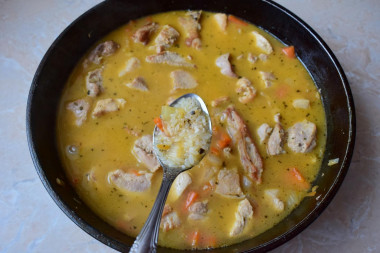
Add the rice steamed with boiling water to the pan (see step 2) and fill everything with water so that it completely covers the rice. Stir and cover with a lid. Cook the pilaf for 30 minutes on low heat. It is not necessary to stir during cooking.
Step 8:
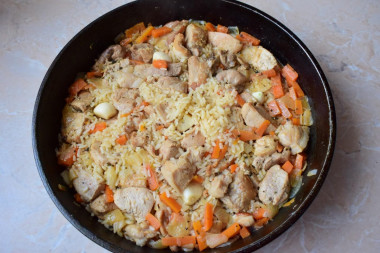
Rice will absorb all the liquid. Try rice. If necessary, you can add quite a bit of water. When the rice becomes soft, mix the pilaf and spread the peeled garlic. Remove the pan from the heat and leave it under the lid for 20 minutes.
Step 9:
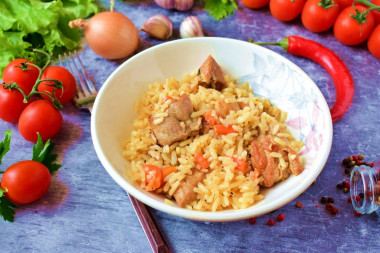
The finished pork pilaf turns out very tasty and satisfying. Bon appetit!
Important! To make rice dishes invariably delicious, read article about the subtleties of choosing rice and the secrets of its preparation .
In addition to pork, any other meat can be used in this dish. Keep in mind that the cooking time, as well as the taste and calorie content of the dish will change. For example, beef is cooked longer than pork, and chicken fillet or turkey is less.
To check whether the oil has warmed up well enough in the pan, you can do it in a simple way. Lower a wooden spatula into it. If bubbles have gathered around it, then you can start the frying process.
Caloric content of the products possible in the composition of the dish
- Onion - 41 kcal/100g
- Pork fat - 333 kcal/100g
- Pork meat - 357 kcal/100g
- Pork - low-fat roast - 184 kcal/100g
- Pork chop on a bone - 537 kcal/100g
- Pork - schnitzel - 352 kcal/100g
- Pork Shoulder - 593 kcal/100g
- Boar's leg - 113 kcal/100g
- Pork - 259 kcal/100g
- Raw wild rice - 353 kcal/100g
- Brown raw rice - 360 kcal/100g
- Boiled brown rice - 119 kcal/100g
- White fortified raw rice - 363 kcal/100g
- White fortified boiled rice - 109 kcal/100g
- White rice, steamed, with long grains raw - 369 kcal/100g
- Steamed white rice, boiled with long grains - 106 kcal/100g
- Instant dry rice - 374 kcal/100g
- Instant rice, ready to eat - 109 kcal/100g
- Fig - 344 kcal/100g
- Carrots - 33 kcal/100g
- Dried carrots - 275 kcal/100g
- Boiled carrots - 25 kcal/100g
- Garlic - 143 kcal/100g
- Vegetable oil - 873 kcal/100g
- Salt - 0 kcal/100g
- Water - 0 kcal/100g
- Spices dry - 240 kcal/100g

